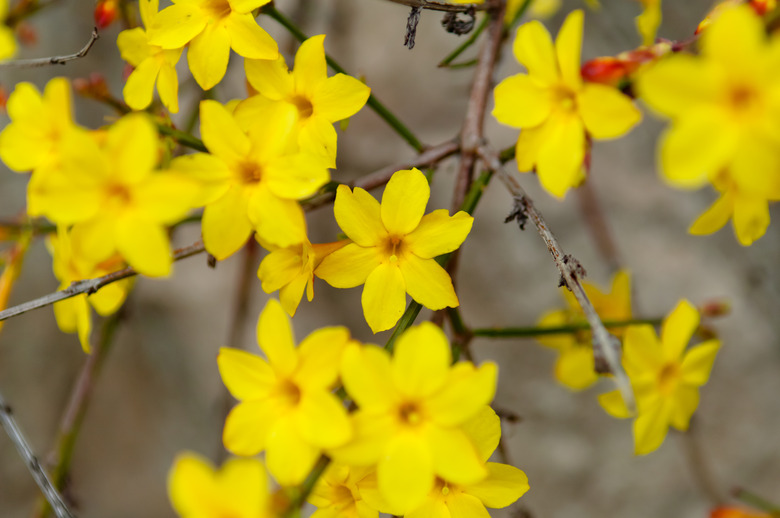The Best Time To Plant A Jasmine In Texas
When you think of a sweetly fragrant shrub, jasmine probably comes to mind first, although there are a variety of plants in the Jasminum genus. Most jasmine are vining or semi-vining shrubs that can be trained to cover walls or up trellises. Regardless of where you live, the best time for planting jasmine is spring or fall.
Meet the Jasmine
Jasmine brings to mind frothy flowers with an intoxicating fragrance, but did you know that there are many kinds of jasmine, from shrubs to vines to ground cover? And that's just true jasmine, that is, plants in the Jasminum genus. Other popular plants are also called jasmine — like the gorgeous star jasmine (Trachelospermum jasminoides), another flowering vine with highly scented flowers.
The most common type of true jasmine is common jasmine (Jasminum officinale), also known as poet's jasmine. It is an evergreen perennial with a vining habit. It can climb to 15 feet when trained to a trellis or wall, but stays about 4 feet when grown as an unsupported bush. Blooms are white and extremely fragrant, filling the shrub's branches all summer long. The scent is said to help you sleep. Another true jasmine is winter jasmine (Jasminum nudiflorum). As its name suggests, its yellow flowers appear in winter and have no scent.
Other species of jasmine are vines from the tropics or subtropics. All offer flowers, some scented, some unscented.
Care for Your Jasmine
Growing a common jasmine in Texas is not difficult. The plant is hardy in U.S. Department of Agriculture plant hardiness zones 7b thorough 10a, which includes almost all of the state. The plant is a tough perennial and asks little to thrive. It needs a very sunny location, at least six hours of direct sun and additional hours of indirect sun, and well-drained soil.
Common jasmine tolerates both drought and pollution, but prefers regular irrigation. Allow the ground to dry out between waterings. If you want to grow common jasmine as a bush, plan on hard pruning every year after the flowers fade in fall. As a spreading vine, just give the plant its head and watch it go.
Plant a Jasmine in Texas
Most plants do best when planted either in fall, before the winter cold, or in spring. Jasmine is no exception. Experts recommend that plants purchased in containers be planted in fall rather than spring in Texas.
A plant's roots stay active in the soil as long as the temperature doesn't drop below 40 degrees Fahrenheit. The winter temperatures in most of jasmine's hardiness zones remain above 40 degrees, which means that jasmine shrubs planted in fall continue to establish through autumn and winter. That means less chance that the jasmine will succumb to transplant shock.
